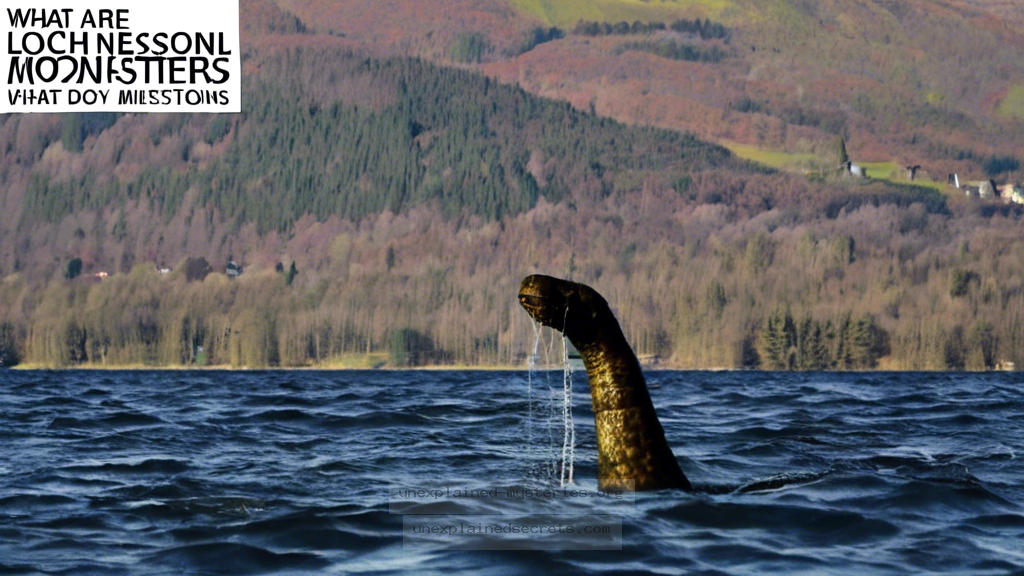What Are the Most Compelling Sonar Detections of the Loch Ness Monster and What Do They Mean?
What Are the Most Compelling Sonar Detections of the Loch Ness Monster and What Do They Mean?
The Loch Ness Monster, affectionately known as “Nessie,” has intrigued the world for decades, serving as a focal point for cryptozoologists, tourists, and skeptics alike. Among the various methods of investigation, sonar technology has emerged as a particularly compelling tool, revealing potential evidence of something unexplained beneath the surface of Loch Ness. This blog post explores the most significant sonar detections associated with Nessie, their implications, and what they contribute to the ongoing mystery surrounding this legendary creature.
Historical Context of Sonar Use in Loch Ness
Sonar technology has been a cornerstone in the investigation of aquatic mysteries, including the Loch Ness Monster. The first systematic sonar scan of Loch Ness occurred in the 1960s, with the advent of advanced maritime technology. In 1960, a team of researchers led by the Loch Ness Investigation Bureau utilized sonar to explore the depths of the loch, which is over 200 meters (approximately 656 feet) deep. This marked a turning point in Nessie investigations, moving from anecdotal evidence to scientific inquiry.
Over subsequent decades, various expeditions have employed sonar, including the notable 1987 Operation Deep Scan, where 24 boats equipped with sonar devices conducted a thorough survey of the loch. This operation generated a considerable amount of data and led to intriguing sonar readings that have fueled speculation about the existence of large unidentified creatures in Loch Ness. The historical context illustrates how sonar has transformed the search for Nessie from myth into a potentially scientific endeavor.
Core Concepts of Sonar Technology
Sonar, or Sound Navigation and Ranging, operates on the principle of transmitting sound waves underwater and analyzing the echoes that return. This technology can detect objects submerged in water, measure their distance, and even provide information about their size and shape. There are two main types of sonar: active and passive. Active sonar sends out sound waves and listens for their echoes, while passive sonar only listens for sounds made by objects in the water.
In the context of Loch Ness, active sonar has been the primary method used to detect potential large marine life. The challenge lies in the murky waters of Loch Ness, which hinder visibility and complicate the interpretation of sonar data. Despite these limitations, sonar remains one of the most promising tools for investigating Nessie’s existence.
Notable Sonar Detections: A Closer Look
Several sonar detections have been documented through the years, each sparking renewed interest and investigation into the Loch Ness Monster. Here are some of the most notable cases:
- 1960s Loch Ness Investigation Bureau Scans: Initial sonar scans revealed large, unexplained objects that did not match the known fish species in the area.
- 1972 Detection by Dr. Neil Gemmell: A study conducted by Dr. Gemmell’s team yielded sonar readings consistent with large entities, prompting further exploration.
- 1987 Operation Deep Scan: This extensive survey detected a large, moving object that was later hypothesized to be a large fish or possibly a creature similar to Nessie.
Each of these detections has contributed to the lore of the Loch Ness Monster, but also raised questions about the accuracy and interpretation of sonar data. Some scientists argue that the readings could represent schools of fish or underwater debris rather than a singular creature.
Interpretation of Sonar Data and Its Implications
The interpretation of sonar data is a critical aspect of understanding the mystery of Loch Ness. Sonar returns can be affected by various factors, including water temperature, depth, and the presence of other objects. Many sonar detections have been dismissed as anomalies—unidentifiable echoes resulting from environmental conditions rather than biological entities.
Despite the skepticism, some sonar readings have been compelling enough to warrant further investigation. For instance, the 1987 Operation Deep Scan produced a series of echoes that were large and consistent in shape, leading researchers to consider the possibility of a large, unidentified creature in the loch. These findings have encouraged both continued interest and skepticism, creating a dynamic ongoing dialogue in the scientific community.
Alternative Perspectives: Skeptics and Believers
The debate surrounding the Loch Ness Monster is deeply polarized between skeptics and believers. Skeptics often argue that sonar detections can be explained through natural phenomena, such as large fish, underwater currents, or even submerged debris. They emphasize the need for rigorous scientific methodology and caution against jumping to conclusions based on limited data.
On the other hand, believers in the Loch Ness Monster often point to the historical sightings and sonar data as compelling evidence for the creature’s existence. They argue that while some sonar readings may be misinterpreted, there is enough unexplained evidence to warrant serious investigation. This divide showcases the challenges faced in the study of cryptozoology, where anecdotal evidence often clashes with scientific rigor.
Common Misconceptions About Sonar and Loch Ness
Several misconceptions surround the use of sonar in the Loch Ness investigations and the nature of the sonar detections themselves. One prevalent myth is that sonar can definitively identify the size and shape of objects underwater. While sonar can provide valuable information, it often lacks the clarity needed for precise identification. Additionally, many people believe that sonar can detect anything living or moving in the water; however, this is not true, as sonar may fail to detect smaller creatures or those that remain still.
Another misconception is that sonar readings are infallible and should be taken at face value. In reality, sonar data requires careful analysis and interpretation, considering environmental factors that can complicate results. This misunderstanding can lead to misinformed conclusions and contribute to the sensationalization of sonar detections.
Best Practices for Future Investigations
As interest in the Loch Ness Monster continues, it is essential for future investigations to adopt best practices to ensure scientific integrity. Here are some recommendations:
- Collaboration with Marine Biologists: Engaging experts in marine biology can help in interpreting sonar data accurately.
- Utilization of Advanced Technology: Employing cutting-edge sonar and imaging technology, including 3D mapping and remote-operated vehicles, can enhance data collection.
- Transparent Reporting: Sharing findings openly with the scientific community can foster collaboration and enhance credibility.
By adhering to these best practices, researchers can improve the quality of investigations into Loch Ness and contribute to a better understanding of the mysterious phenomena that continue to captivate our imaginations.
Future Directions: Ongoing Research and Developments
Looking ahead, the exploration of Loch Ness remains an active field for researchers and enthusiasts alike. With advancements in technology, such as improved sonar systems, underwater drones, and environmental DNA (eDNA) sampling, the potential to uncover new evidence is greater than ever. eDNA sampling, in particular, offers a non-invasive way to detect the genetic material of organisms in the water, which could lead to groundbreaking discoveries about the biodiversity of Loch Ness.
In addition, public interest and funding for Loch Ness investigations continue to grow, allowing for more comprehensive and well-funded studies. There may also be future collaborations between scientists and cryptozoologists, blending the lines between rigorous scientific research and the pursuit of legendary creatures like Nessie.
Conclusion: The Mystery of Loch Ness Awaits
The sonar detections associated with the Loch Ness Monster represent a fascinating intersection of technology, myth, and scientific inquiry. While skepticism remains high, the compelling nature of sonar evidence continues to inspire curiosity and exploration. As researchers employ new technologies and methodologies, the debates surrounding Nessie’s existence will persist, inviting both believers and skeptics to engage in the ongoing mystery. Whether the Loch Ness Monster is a figment of folklore or a real creature hiding in the depths of a Scottish loch, the quest for answers remains one of the most captivating stories in the realm of cryptozoology.
Other Articles
Recent Posts
- What Happened to Flight MH370? The Conspiracy Theories That Still Haunt Us
- What Secrets Lurk Within the Walls of the Infamous Trans-Allegheny Lunatic Asylum?
- What Evidence Supports the Existence of Bigfoot in the Pacific Northwest?
- What Happened to the Indus Valley Civilization? Unraveling the Mysteries of Ancient Urban Life
- Can Telepathy Be Scientifically Proven Through Laboratory Evidence?







